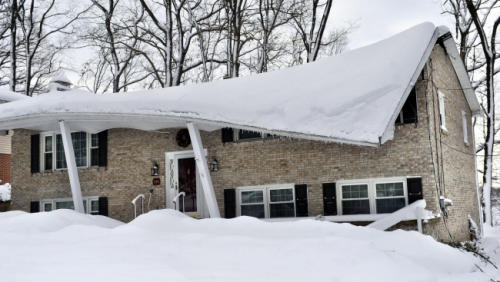

Dealing with roof snow damage is a critical task after severe winter weather events. A significant snow load on your roof can lead to considerable damage, posing risks to your property and well-being. This comprehensive guide will detail the steps involved in dealing with roof snow damage, from assessment and initial cleanup to repair and insurance claims. It’ll equip you with the knowledge to protect your home and get back on track. We’ll cover crucial steps for evaluating damage, securing your property, and initiating the repair process, ultimately empowering you to handle such situations effectively.
Assessing the Extent of Roof Snow Damage
Initial Visual Inspection
Inspecting your roof for snow damage is crucial immediately after the storm subsides. Look for obvious signs of damage, such as sagging sections, missing shingles, or noticeable water stains. Document any damage you observe with photos, noting specific areas and levels of damage. This documentation will be invaluable if you need to file an insurance claim. Taking meticulous notes regarding the time, date, and weather conditions will also help.
Securing Your Property
Immediate Safety Precautions
Safety should be your top priority when dealing with roof snow damage. Do not attempt any repairs unless you are trained and equipped to do so. Significant damage can lead to the danger of a roof collapse. Engage professionals to assess the damage and provide safety recommendations and recommendations. Clear the immediate area around the house to avoid potential hazards and ensure there are no obstacles hindering access to the roof.
Initiating the Repair Process
Contacting Roofing Professionals
Contacting a qualified roofing contractor as soon as possible is crucial for comprehensive damage assessment and repair planning. They can assess the extent of the damage, advise on proper repair procedures, and provide accurate cost estimates. Your first contact is vital in order to promptly assess damage and devise a plan of action.
Insurance Claims and Recovery
Filing a Claim
Gathering documentation is essential when filing an insurance claim for roof snow damage. Include all visual evidence, your detailed notes, and professional assessments, Along with this, gather documentation on the damages. Ensure that your insurance company has all of the necessary information for filing the claim. Your documentation will be reviewed, and a settlement will be approved based on the specifics of the case and the conditions found.
Preventing Future Snow Damage
Maintaining Your Roof
Regular roof maintenance is crucial for preventing future snow damage. It’s important to inspect your roof periodically to detect potential issues early. If necessary, use protective measures such as adding roof guards to support weight bearing. These proactive measures will help limit damage in the event of future inclement weather.
Seeking Professional Help
Contractor Expertise
In case of significant damage or any doubts about the repairs, it is highly recommended to seek the assistance of qualified contractors for a precise diagnosis. Their professional guidance can prevent further damage and ensure cost-effective solutions.
Frequently Asked Questions
What are the most common types of roof damage caused by snow?
One common type of damage is due to the weight of accumulated snow causing structural issues or causing shingles to detach from the roof’s surface. Another significant type is water damage, which may result from leaks caused by ice dams. It’s essential to address these issues to ensure long-term safety and structural integrity.
How long does it typically take to repair roof snow damage?
The repair time for roof snow damage varies depending on the extent of the damage and the complexity of the repairs. A simple repair might take a few days, whereas extensive damage may require several weeks to complete.
In conclusion, dealing with roof snow damage requires a proactive approach, from initial assessment to final cleanup. Understanding the potential risks and employing effective strategies can protect your property and ensure a swift and safe recovery. Consider contacting a professional roofing company for comprehensive assessment and repair services, especially for extensive damage. By taking these steps, you can mitigate further damage and get your roof back in top shape, safeguarding your home from future issues.